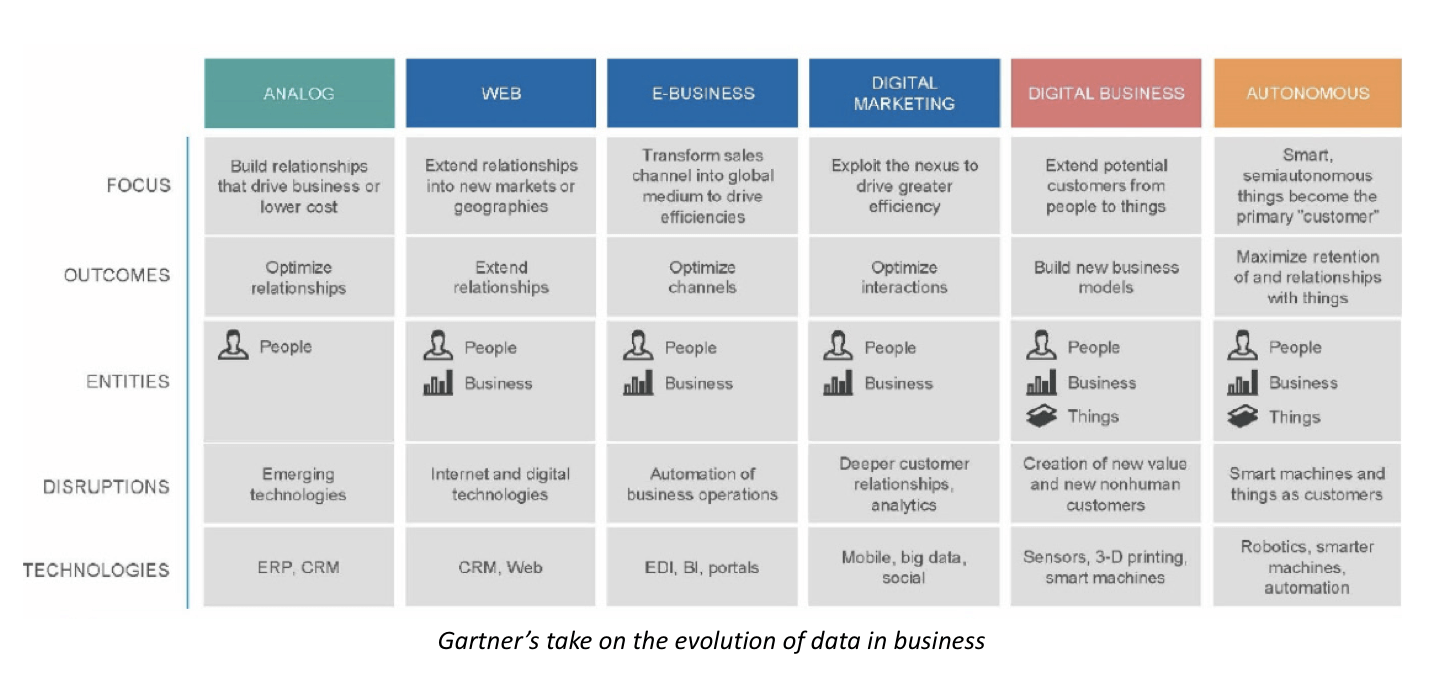Data-driven business is booming. The dominant, driving force in business has arguably become a driving force in our daily lives for consumers and corporations alike.
We now live in an age in which data is a more valuable resource than oil, and five of the world’s most valuable companies – Alphabet/Google, Amazon, Apple, Facebook and Microsoft – all deal in data.
However, just acknowledging data’s value won’t do. For a business to truly benefit from its information, a change in perspective is also required. With an additional $65 million in net income available to Fortune 1000 companies that make use of just 10 percent more of their data, the stakes are too high to ignore.
Changing Perspective
Traditionally, data management only concerned data professionals. However, mass digital transformation, with data as the foundation, puts this traditional approach at odds with current market needs. Siloing data with data professionals undermines the opportunity to apply data to improve overall business performance.
The precedent is there. Some of the most disruptive businesses of the last decade have doubled down on the data-driven approach, reaping huge rewards for it.
Airbnb, Netflix and Uber have used data to transform everything, including how they make decisions, invent new products or services, and improve processes to add to both their top and bottom lines. And they have shaken their respective markets to their cores.
Even with very different offerings, all three of these businesses identify under the technology banner – that’s telling.
Common Goals
One key reason for the success of data-driven business, is the alignment of common C-suite goals with the outcomes of a data initiative.
Those goals being:
- Identifying opportunities and risk
- Strengthening marketing and sales
- Improving operational and financial performance
- Managing risk and compliance
- Producing new products and services, or improve existing ones
- Monetizing data
- Satisfying customers
This list of C-suite goals is, in essence, identical to the business outcomes of a data-driven business strategy.
What Your Data Strategy Needs
In the early stages of data transformation, businesses tend to take an ad-hoc approach to data management. Although that might be viable in the beginning, a holistic data-driven strategy requires more than makeshift efforts, and repurposed Office tools .
Organizations that truly embrace data, becoming fundamentally data-driven businesses, will have to manage data from numerous and disparate sources (variety) in increasingly large quantities (volume) and at demandingly high speeds (velocity).
To manage these three Vs of data effectively, your business needs to take an “any-squared” (Any2) approach. That’s “any data” from “anywhere.”
By leveraging a data management platform with data modeling, enterprise architecture and business process modelling, you can ensure your organization is prepared to undergo a successful digital transformation.
Data modeling identifies what data you have (internal and external), enterprise architecture determines how best to use that data to drive value, and business process modeling provides understanding in how the data should be used to drive business strategy and objectives.
Therefore, the application of the above disciplines and associated tools goes a long way in achieving the common goals of C-suite executives.
For more data advice and best practices, follow us on Twitter, and LinkedIn to stay up to date with the blog.
For a deeper dive into best practices for data, its benefits, and its applications, get the FREE whitepaper below.



